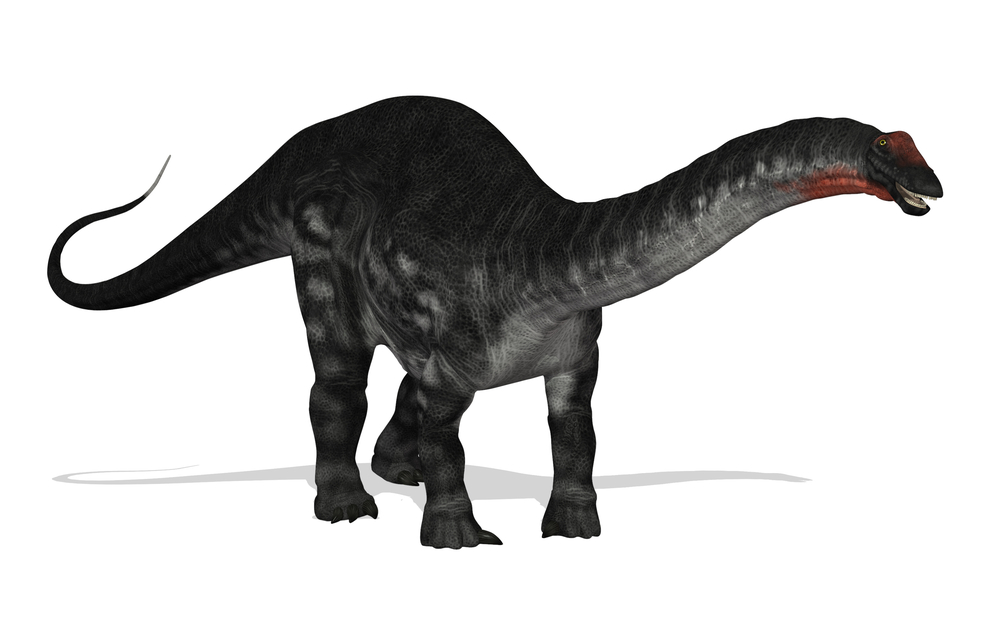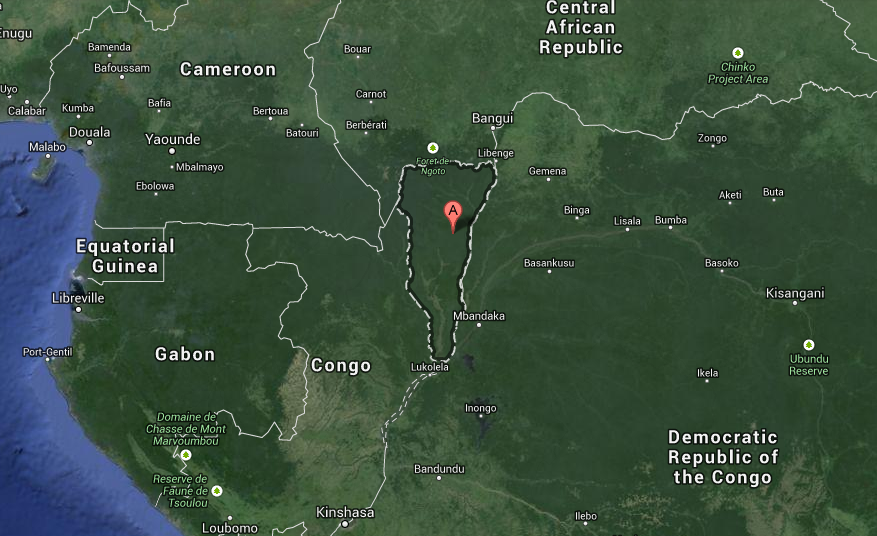Mokele-Mbembe: The Search for a Living Dinosaur

Everyone knows that the dinosaurs died out a while ago — in fact, more than 65 million years ago, give or take. Massive, powerful, and awe-inspiring, they have been popular for years, appearing in countless books, movies, and dolls. But what if they still existed?
The idea of still-living dinosaurs has captured the public's imagination for well over a century. Sir Arthur Conan Doyle, creator of Sherlock Holmes, published a 1912 novel called "The Lost World," set in the remote Venezuelan jungle where dinosaurs still survive in modern times. Dino-revival films and books such as "Jurassic Park" were inspired by Conan Doyle's vision — in fact, the sequel to "Jurassic Park" was titled "The Lost World."
That was fiction, but some people believe that some dinosaurs linger on, hiding until the present time in the remote jungles of central Africa, especially in the Democratic Republic of Congo. The region is the reputed home of the mokele-mbembe, an amphibious dinosaur-like creature said to be up to 35 feet long, with brownish-gray skin and a long, flexible neck. According to legends, it lives in caves it digs in riverbanks and feeds on elephants, hippos, and crocodiles.
Origin of the Mokele-mbembe
While dinosaurs have intrigued people all over the world, central Africa is unique in that it is the only place where many people really believe they may still exist. Daniel Loxton and Donald Prothero, authors of "Abominable Science: Origins of the Yeti, Nessie, and other Famous Cryptids," researched the mokele-mbembe in depth. They note that though "Rumors of enormous beasts hidden in the Congo region date back to at least the sixteenth century... the idea of an elusive African dinosaur-like animal seems to have developed only after the discovery in the nineteenth century of fossil dinosaurs."
In other words, Africa — like all inhabited continents and oceans in centuries past — was associated with legends and rumors of unknown monsters that lurked within, a threat to unwary travelers. But the idea of a dinosaur-like animal named mokele-mbembe is a 20th-century creation (in fact the same is true for Scotland's Loch Ness monster as well).
The origin of mokele-mbembe can be traced back to a 1909 book titled "Beasts and Men," by a showman and zoologist named Carl Hagenbeck. In that book, Hagenbeck — musing on recently discovered dinosaur bones — speculated that sauropods (long-necked dinosaurs such as the Apatosaurus) might still be alive in deepest Africa. He offered no evidence aside from legends and rumor, but the sensational claims were quickly picked up and circulated by the press; for example a Washington Post story from 1910 announced that "Brontosaurus Still Lives." That publicity, according to Loxton and Prothero, "launched what would become the modern cryptozoological legend of mokele-mbembe."
Thus the reports and legends of this African monster, they conclude, are not the result of any hard evidence or genuine first-hand stories of native encountering the beast, but instead "a distillation of many creatively varied stories from widely separated regions." Stories and legends are fine, but they are not scientific evidence.

Modern searches
The fact that there's no real evidence for the creature's existence has not deterred people from looking for it, however. In their book "Cryptozoology A to Z," Loren Coleman and Jerome Clark note, "Numerous expeditions have been mounted in search of mokele-mbembe. In 1980 and 1981, monster hunter [and retired University of Chicago biologist] Roy Mackal headed explorations into the Likouala and Lake Tele regions of the Congo, reputed to be hot spots of dinosaur sightings."
Though Mackal never saw the creature or found any evidence of its existence, he did gather more native stories and legends about it. Another expedition was launched by a Japanese film crew in 1992 and resulted in what has been called the "best evidence" for mokele-mbembe: aerial footage of some shape parting water in a lake. Unfortunately, it was ambiguous; what some saw as the head of a living dinosaur others saw as a crocodile, elephant, or even men in a canoe.
More recently, last May a young Missouri man named Stephen McCullah placed a pitch on Kickstarter.com asking for $27,000 in donations so that he and his friends could launch a three-month, four-member expedition to the Republic of the Congo in search of the mokele-mbembe and other new species. Though the team members largely lacked experience in the jungle (or formal education in biology or zoology), they were confident in their chances.
McCullah told LiveScience.com, “We don't necessarily expect to find concrete evidence of mokele-mbembe ... on the first expedition, but we believe there's a good chance during that initial three months that we will find hard evidence of its presence in the area if it is there." According to an Oct. 13 2012, update on the Doubtful News website, the Newmac Expedition to find mokele-mbembe failed almost immediately, and the members returned home without success, having spent nearly $30,000 of donated funds.
In all, there have been more than two dozen searches for the "living dinosaur" over the years and still evidence for mokele-mbembe remains elusive. There are no photographs or films of the creature, no bones or teeth, no evidence beyond stories and anecdote. In the modern world of Google Earth, and ubiquitous cameras and cell phones, it is highly unlikely that dozens or hundreds of dinosaurs (there can't be just one that's 65 million years old!) exist but have somehow never been photographed or even found dead.
The lack of evidence does not deter believers. Only a live or dead specimen will convince mainstream scientists that animals such as Bigfoot or mokele-mbembe exist—the blurry photos, ambiguous videos, and eyewitness reports that make up the vast majority of the evidence for these creatures are simply not enough.
Benjamin Radford is deputy editor of Skeptical Inquirer science magazine and author of six books including "Lake Monster Mysteries: Investigating the World's Most Elusive Creatures" and "Tracking the Chupacabra: The Vampire Beast in Fact, Fiction, and Folklore." His website is www.BenjaminRadford.com.
Sign up for the Live Science daily newsletter now
Get the world’s most fascinating discoveries delivered straight to your inbox.











